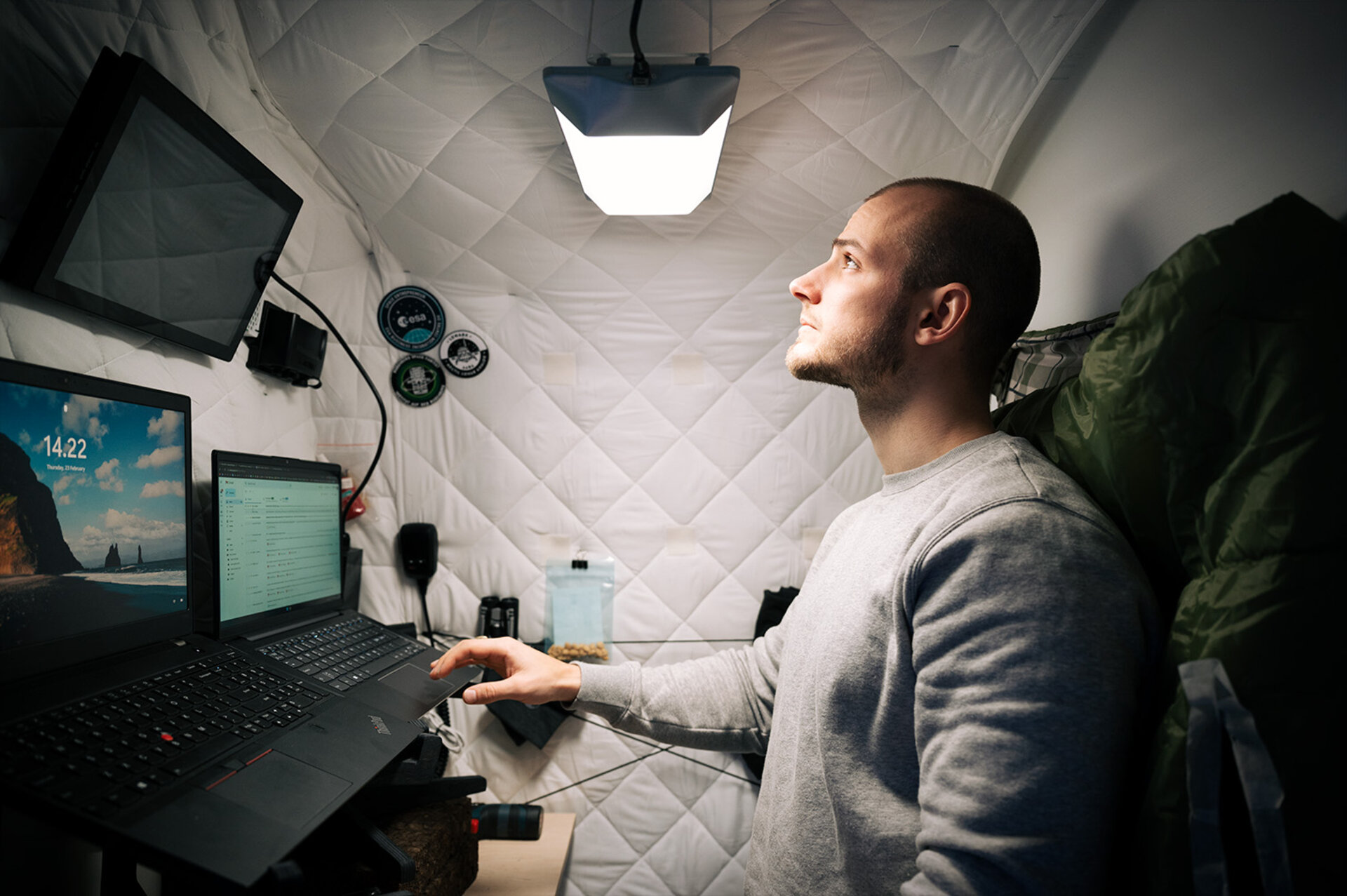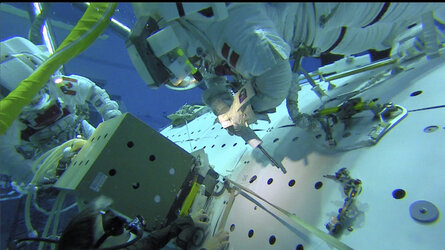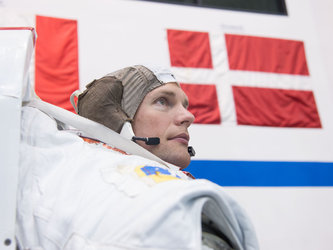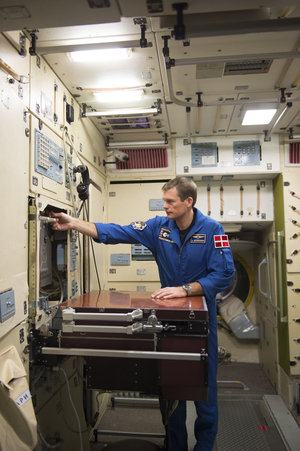A good night’s sleep in orbit
During his Huginn mission, ESA astronaut Andreas Mogensen will run two experiments focusing on sleeping in space: Circadian Light and Sleep in Orbit.
Astronauts on the Space Station do a full circle of Earth every 90 minutes and experience 16 sunsets and sunrises every day. With this unearthly routine, astronauts can struggle to find a natural daily rhythm in space. The Space Station follows Greenwich Mean Time (GMT), which helps keep a consistent schedule, along with regular wake-up and bedtime routines.

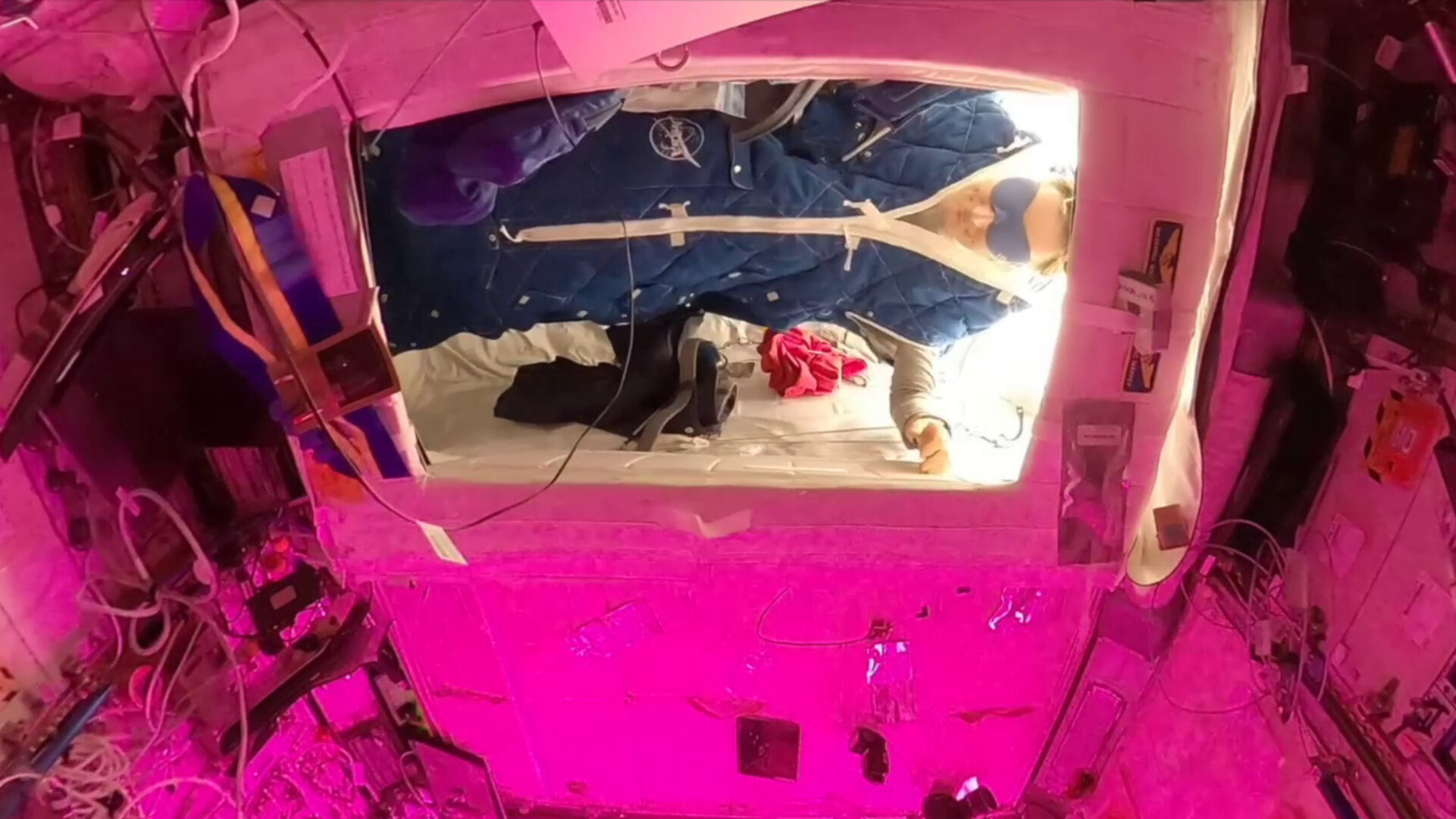
Access the video
Circadian Light
Circadian rhythm describes the physical, mental and behavioural changes our bodies undergo over a period of about 24 hours. Our internal clock is linked to the body’s core temperature, which varies throughout the day, and triggers our metabolism and sleep cycle.
Light exposure is obviously a factor influencing our rhythm as humans tend to wake up during the day and sleep at night.
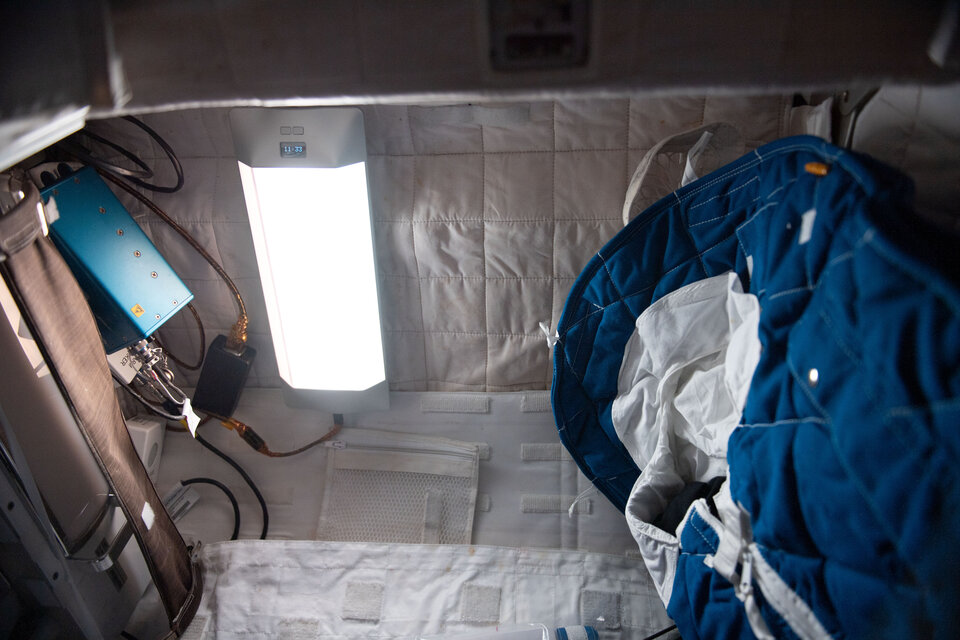
The Circadian Light experiment is developed by SAGA Space Architects from Copenhagen, Denmark. The team created a lamp designed to support the circadian rhythm of astronauts in space.
ESA astronaut Andreas Mogensen installed the light inside his crew cabin on the third day of his stay in space.
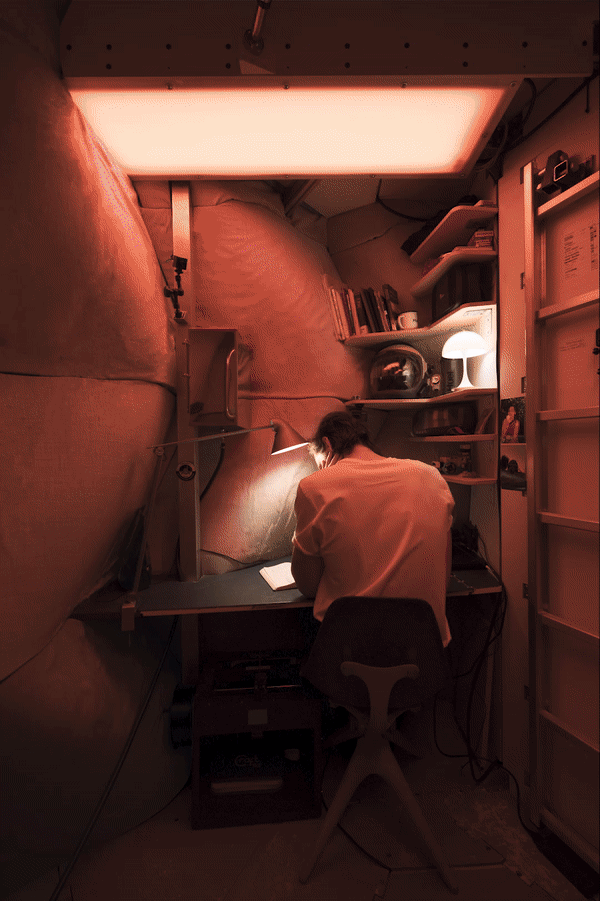
The lamp is synchronised to Andreas’s sleep schedule and change lighting throughout the day.
In the evening, when Andreas goes to sleep, the light will glow in red to simulate a calming sunset. In the morning, when Andreas wakes up, the light will turn blue, evoking the colours of a morning sky.
The colours of the light have been carefully selected to mimic the natural light of day, which astronauts do not experience while on the International Space Station.
The Circadian Light was tested by the two founders of SAGA on a two-month expedition to Greenland, where they found that the light was important to keep a regular schedule and help orient them in time.
ESA sponsors similar research in Antarctica where people at Concordia research station experience long dark winters and continuous summer days, which significantly impact their sleep.
Sleep in orbit
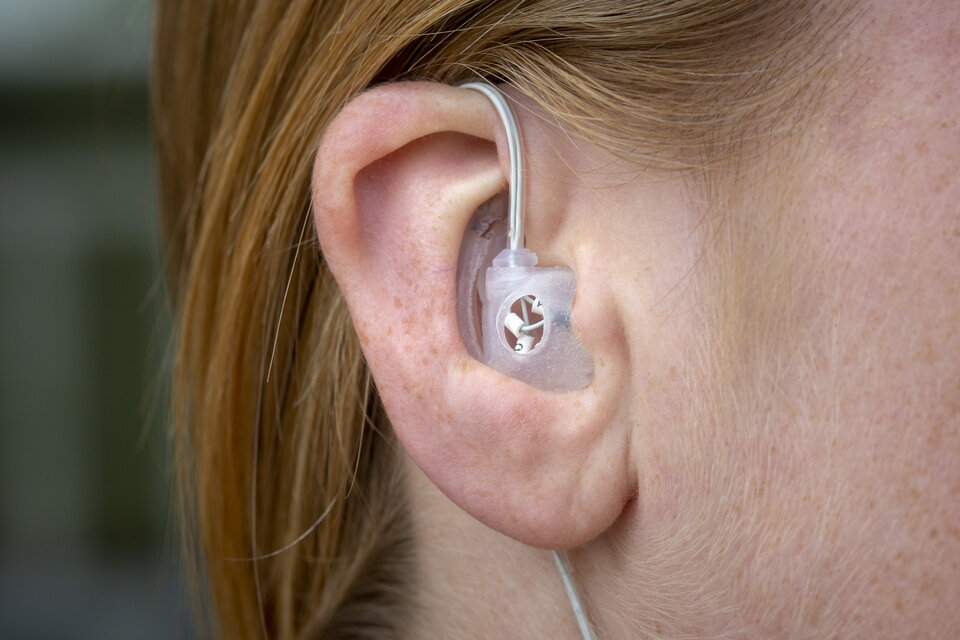
Many astronauts have difficulty adjusting to sleeping in space. Instead of lying down, astronauts float in a sleeping bag strapped to the wall of their sleeping quarters.
Researchers from Aarhus University, Denmark, have developed a small in-ear measuring device that Andreas will wear while sleeping on the Space Station. Similar to in-ear headphones, this device will measure the electroencephalogram (EEG) of Andreas’s brain, allowing researchers to analyse his brain activity throughout the night to help understand the quality of his sleep.

The usual way of measuring EEG is with a helmet-style measurement device, which can often be discomforting due to the size and many wires. The in-ear devices are less invasive and easier to put in before going to bed.
The researchers behind Circadian Light and Sleep in Orbit are collaborating sharing data and conducting the two experiments at the same time to offer additional insights.
Read more about the Huginn mission and the science that Andreas will conduct while he is on the Huginn mission.


